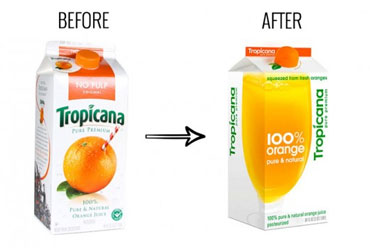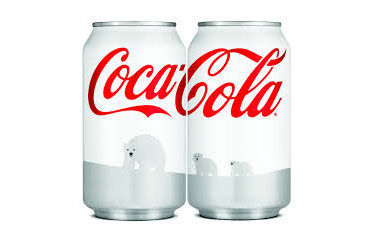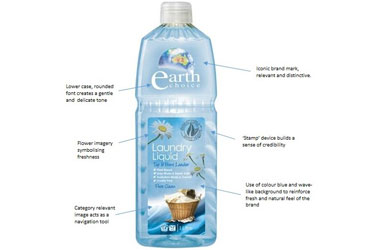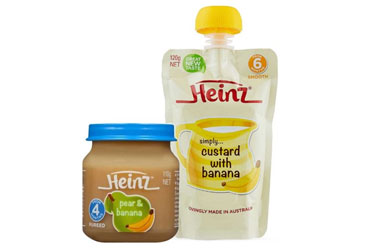![The High Stakes of Packaging: How to get it Right teaser]()
Date published 27 Oct 2016
Packaging is one of the most powerful (and somewhat underrated) marketing tools a brand has: it’s the key touch point in store, and as such has an audience reach potential far beyond that of any other communication channel. With that in mind, pack design decisions can lead to commercial disaster or significant gains.
The well-known case of Tropicana’s 2009 pack re-design provides some clear evidence of this, with the net effect being a full 20% drop in sales as a result. There are some useful lessons to take from this to ensure brands carefully consider any pack development and avoid any such disaster for themselves.

It’s important to remember that when shoppers see a brand’s packaging in a retail environment, they typically do not have warm and fluffy connections with brands – they have lists and budgets; they are distracted, in a hurry, and using their ‘system 1’ brain – looking for short-cuts to help them get what they need as quickly as possible. Empirical evidence suggests these decision making timeframes are exceptionally low, in some cases just one third of a second!
So if shoppers are in such a hurry, how can brands help them ‘short-cut’ to a decision…? And how can packaging design make shoppers quickly feel that they are making the ‘right’ decision, to encourage them to pick up one product over another?
There are two areas through which packaging can do this:
Reinforcing distinctive brand assets
Packaging should be the physical embodiment of brand identity, through a well-defined set of distinctive assets. It is now clear, through a heavy weight of evidence, that developing and reinforcing distinctive assets is critical to a brand’s success. In a shopping context, these assets help shoppers short-cut the processing of products and hone in on brands that are familiar and recognizable by looking for cues such as distinctive colours, logos, and images.
In a seasonal charity campaign (to help save the polar bears) Coca Cola changed the colour of their core range from red to white; unfortunately, many shoppers failed to recognize the brand on shelf which led to confusion and as with Tropicana, the result was a drop in sales.
 This pack design misstep implies the importance of when and how to use consumer insight as part of the development process. There is little doubt the idea of this campaign would have performed well in focus groups; “Coke are changing their packaging from Red to White to help save the polar bears”… It would be likely that most consumers would respond well to that idea, in that environment?
This pack design misstep implies the importance of when and how to use consumer insight as part of the development process. There is little doubt the idea of this campaign would have performed well in focus groups; “Coke are changing their packaging from Red to White to help save the polar bears”… It would be likely that most consumers would respond well to that idea, in that environment?
Except that shoppers didn’t see it like this – they just couldn’t find their ‘normal’ Coke in store – which is RED. Coke quickly responded by abandoning the new pack design and reverting back to their iconic rouge hue.
The lesson: define and protect your distinctive brand assets – learn how shoppers navigate the category, what short-cuts they use, and how they recognize your brand in an instant (remember, you might only have a third of a second to do this!)
Communicating category codes
Beyond signposting a brand’s identity, packaging communicates meaning through every element of the design – from the material to the font, the use of colour, imagery and language; each aspect has implied meaning based on a broader cultural context in which it exists.
 This may seem somewhat esoteric, but the application in packaging design is clear: we can help shape perceptions of a brand through the use of specific and relevant ‘cues’ on pack such as colours, imagery, and language.
This may seem somewhat esoteric, but the application in packaging design is clear: we can help shape perceptions of a brand through the use of specific and relevant ‘cues’ on pack such as colours, imagery, and language.
This is a simplification of complex idea – and great designers have magic powers that perhaps cannot be fully explained (at least in this article). However we can learn about the emotional connections that audiences have with a category through well considered, exploratory research. The formative insights gleaned from early stage research have the power to inform impactful packaging development and avoid eroding equity.
The overall approach is simple: find out as much as possible about the role of the category in audiences’ lives. Analysis of this is a bit trickier but should reveal clear category codes that provide the emotional underpinning of the category.
For example, exploring Baby Food reveals the role of purity, nutrition, and wholesomeness for mums in this category. Understanding the nuances of what these codes mean to this audience will help when designing packaging.

Heinz re-designed their baby food range recently to hero the ingredients, make use of a muted, natural colour palette, and softer fonts to play to the codes of the category and communicate a wholesome, pure and nutritious product through visual cues.
The new range also included pouch formats which further helped build quality and freshness cues (and made the brand’s offer more modern and relevant).
Insight-driven Design: Key Recommendations
The intricacies of successful packaging design research are way beyond the scope of this article but below are four clear recommendations to help brands inform packaging development through consumer and shopper research:
- Explore early: Above all else, experience proves that the most effective packaging design research is conducted early on in the process. Qualitative insight helps brand owners and packaging designers understand more about their audiences’ lives and what role the category plays within that context – which leads to designs that reflect the underlying category codes, building more emotional engagement with packaging.
- Define your assets: Spend the time you have with your audiences in research to understand what they perceive to be your distinctive assets so that you can learn what to keep and what can be changed whilst maintaining your distinct identity on the shelf. Push hard to unpack the meaning of each of these assets and how (if at all) they reflect the category codes.
- Don’t forget the shopper: Spending time in store is the only way you will understand how the category is really shopped, which can lead to deep insight into less conscious navigation and assessment processes – all of which will inform stronger designs. A mix of observation and further probing will help build a clear picture of how shoppers interact with the category in store.
- Test designs in a shopper context: When designs have been developed and require testing before launch, ensure they are researched using an approach that reflects the reality of in store decision making e.g. time restrictions, on shelf product recall exercises, etc. This will help assess the design’s potential in store more accurately and help a brand to get their packaging right.
Back To News & Views